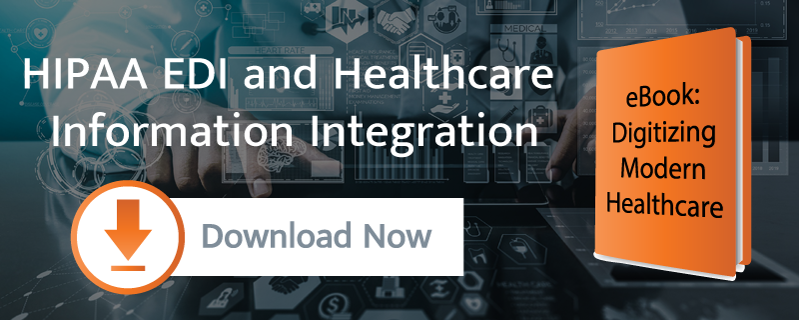
As a healthcare provider, you have a number of tasks. You must ensure the patient becomes healthy so he or she can live a normal life, you have to run your operation in a way that is efficient and cost-effective, and you have to abide by regulations such as HIPAA so that you do not pay hefty financial penalties.
How can you remain HIPAA-compliant and still achieve those other goals? The answer lies in healthcare EDI. Read on to learn about transaction sets, an important component in sending healthcare EDI messages.
The HIPAA EDI Rule
HIPAA mandates that covered entities must use healthcare EDI X12N EDI data transmission protocol when sending information. The X12N EDI data transmission protocol is a particular messaging standard that ensures that information is secure and accurate.
There are certain transactions that must be sent via the X12N EDI data transmission protocol, including health care claims, claims status and remittance advices, eligibility verifications and responses, referrals and authorizations, and coordination of benefits. These transactions are known as EDI transaction sets.
About What Healthcare EDI Transaction Sets Do You Need to Know?
There are a number of important healthcare EDI transaction sets, which are outlined below.
EDI Healthcare Claim Transaction Set (known as 837) is used to submit billing information, encounter information, or both. The only time it is not used is for retail pharmacy transactions. Additionally, this transaction set can be used to transmit healthcare claims and billing details between payers with different responsibilities when benefits coordination is necessary to monitor the rendering, billing, and/or payment of health care services.
NCPDP Telecommunications Standard version 5.1 is the EDI healthcare transaction set for retail pharmacy transactions. Healthcare professionals who dispense medication use this transaction set to submit claims directly or to intermediary billers and claims clearinghouses. As with the previous example, this healthcare EDI transaction set can be used to transmit claims for retail pharmacy services and billing payment information when benefits coordination is required between different payers.
Transaction set 834, also known as EDI Benefit and Enrollment Maintenance Set, is utilized by employers, unions, government agencies, associations, or insurance agencies to enroll members to a health insurance plan (in many cases, referred to as a “payer,” because it pays claims, administers insurance, benefits, or products).
Healthcare EDI transaction sets are not just for submitting payment information or claims. They can also be used to request information and submit responses. Transaction 270 is used to inquire about eligibility and benefits, transaction 271 is the response to those inquiries, and transaction 276 is a claim status request.
Being HIPAA-compliant means being aware of crucial EDI transaction sets. These are the formats which healthcare providers and payers use to transmit information to one another. A trusted partner can guide you through the complexity of EDI healthcare transactions to ensure you comply with the law. Get an EDI Assessment. Absolutely free.



